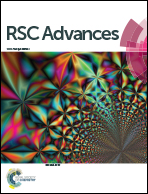The influences of V and Gd dopants on the structures and electrical and magnetic properties of PbPdO2 thin films
Abstract
PbPdO2, PbPd0.9V0.1O2 and PbPd0.9Gd0.1O2 thin films with body-centered orthorhombic structure were prepared by PLD technique, respectively. Their structures, magnetic and electrical properties were measured by XRD, SEM, AFM, EDS, XPS and VSM, respectively. The experimental results indicate that the three samples all have the preferred orientation of (002), and room temperature ferromagnetism. From EDS and XPS results, we can deduce that there exist Pb vacancies in the three samples. Meanwhile, the valence states for Pb, Pd, O, Gd and V ions were found to be 2+, 2+, 2−, 3+ and mixed 4+ and 5+, respectively. It was also found that the magnetic moments of PbPdO2 and PbPd0.9Gd0.1O2 are least and largest, respectively. Moreover, the electrical characteristics analysis indicates that the electrical resistivity is enhanced by V ion substitution, but reduced by Gd ion substitution. In addition, the significant insulator–metal transition temperatures of PbPdO2, PbPd0.9V0.1O2 and PbPd0.9Gd0.1O2 were found to be about 385 K, 390 K and 430 K, respectively. Finally, according to the experimental facts of Pb vacancies in the three samples, the first-principles calculated models containing Pb vacancies were established. The calculated results explain well the magnetic origin of PbPdO2, and V and Gd doping roles on its electrical and magnetic properties.



 Please wait while we load your content...
Please wait while we load your content...